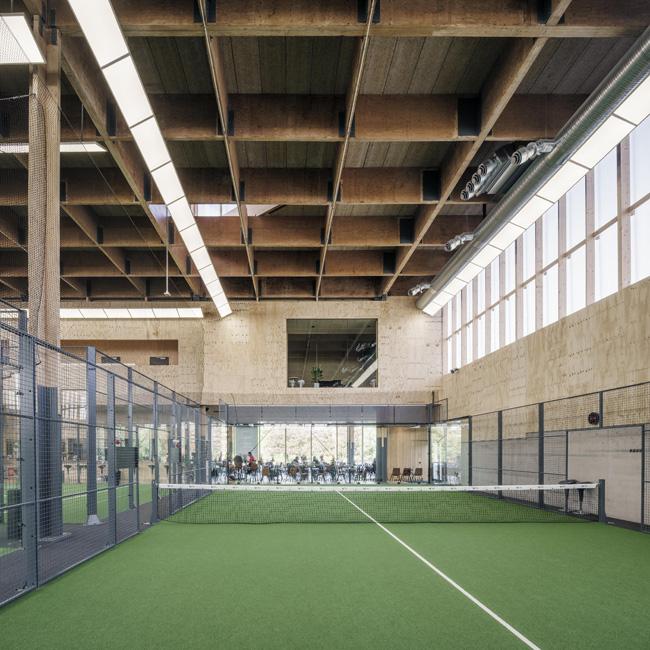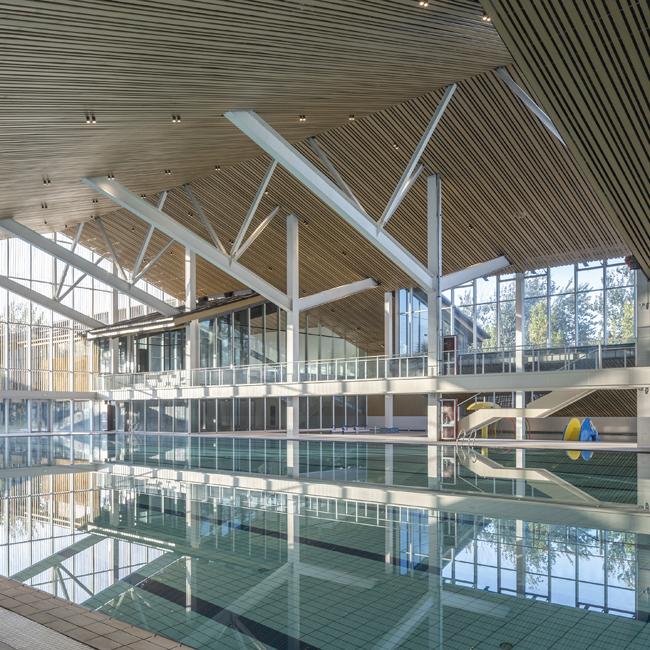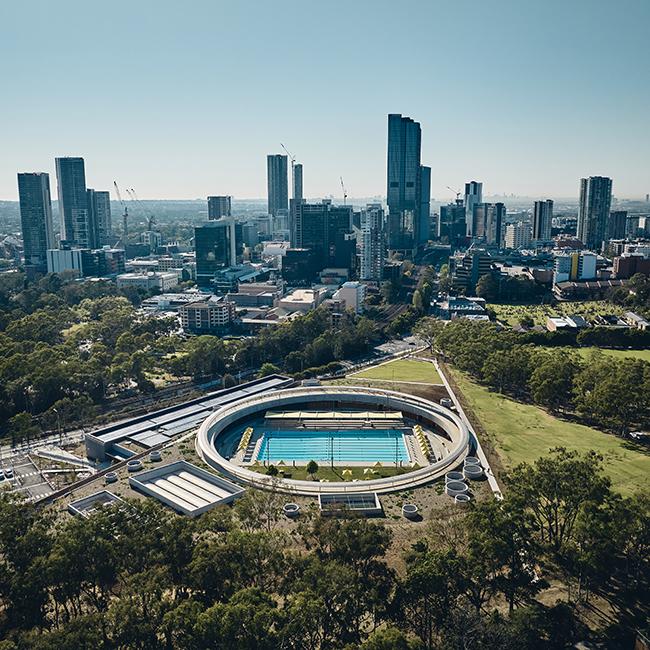Learning to play
published in sb 1 2020
The meaning of the Latin phrase “Mens sana in corpore sano” (usually translated as “a healthy mind in a healthy body”) has never been more important than in present-day society. Early childhood is the best time to encourage to an active lifestyle. The activity zone at KO Kindergarten and Nursery – invented by the architects at HIBINOSEKKEI, together with Youji no Shiro and KIDS DESIGN LABO – is based on the concept of “creating health by playing”.
Matsuyama is the largest city on the island of Shikoku and the capital of Ehime Prefecture. KO Kindergarten and Nursery has been built on the same spot as the former but rundown building. Traffic has increased a lot in the streets of the capital. Even in early childhood children are taken by car or have to take the bus to the kindergarten. They have little chance to walk and gain a little exercise in their daily lives. Back at home, children tend to play more with electronic devices rather than making up their own games in a natural environment, which offers a multitude of opportunities. For these reasons, KO Kindergarten and Nursery was rebuilt with the concept of “creating health by playing”.
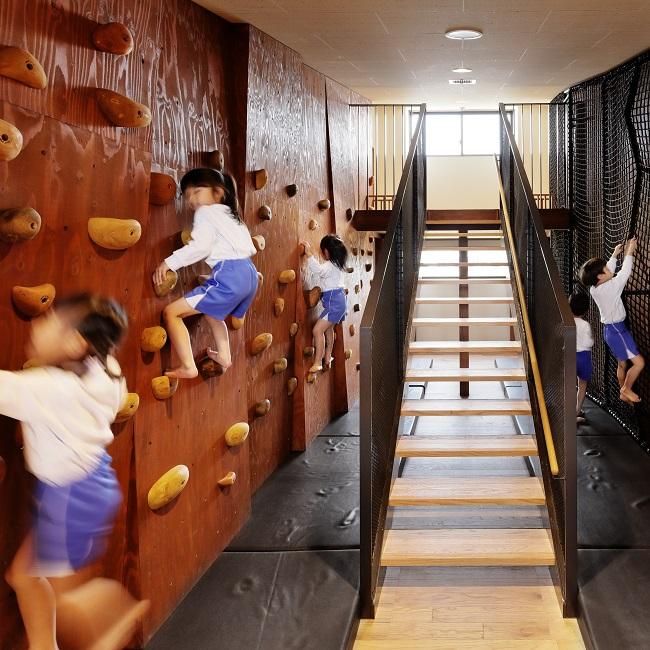
photo: Ryuji Inoue (studio BAUHAUS)
Good to know
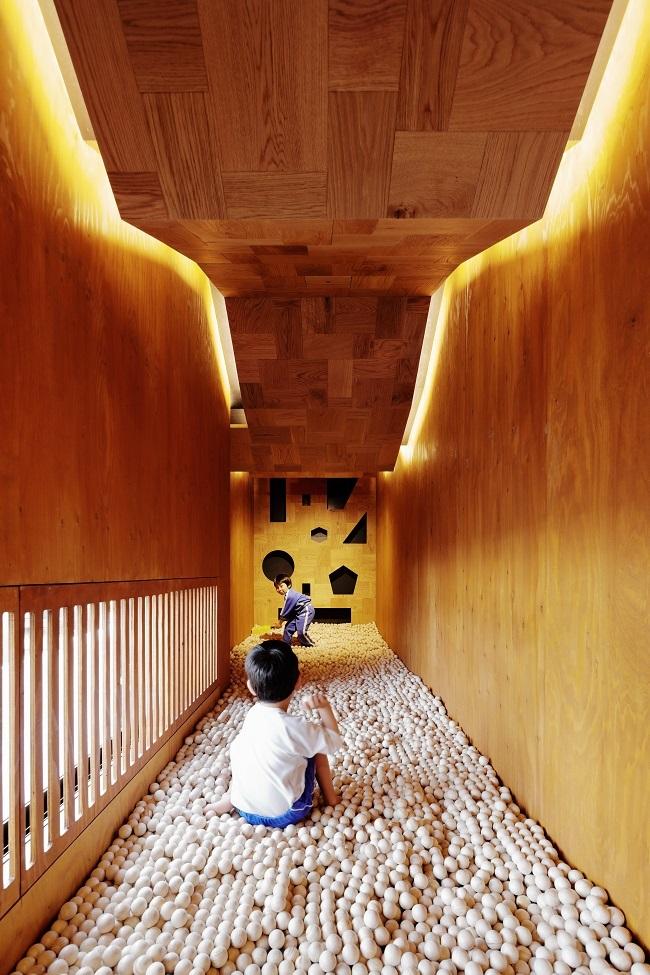
photo: Ryuji Inoue (studio BAUHAUS)
Location
Matsuyama, Ehime, Japan
Client/operator
KO Kindergarten
Architects
HIBINOSEKKEI
JP-Kanagawa
www.hibinosekkei.com
Youji no Shiro
www.e-ensha.com
Order made furniture
KIDS DESIGN LABO
www.kidsdesignlabo.com
Author
Kaho Hayakawa
Potos
Ryuji Inoue (studio BAUHAUS)
Official opening
2019
Activity zone in the centre

photo: Ryuji Inoue (studio BAUHAUS)
The design team shifted rooms horizontally and vertically. The staff’s office and nursery are located at the edge of the building to create free spaces in the centre. 14 different kinds of unique play spaces have been designed to look like streets. In the past, children used to play in the streets of Matsuyama and were free to make up many unique games. As a consequence of increasing car traffic, the local scenery has vanished. To revive these former scenes and encourage children to play actively, 14 street play spaces have been designed.
Any of these play spaces has a unique name and concept, such as “wind path”, “cat street”, “secret base”, neighbour house”, “rolling slope”, “climbing net tree”, or “ball pool”. Children not only like open spaces for active play but also need confined spaces for hiding and playing in secrecy. Thus, some of the play spaces are open and others are confined, allowing children to develop their creative play.
Scientific concept encourages healthier behaviour
The design of the 14 play spaces is based on educational research. Kazuhiko Nakamura, a professor of education at Yamanashi University in Japan, said during childhood children should learn 36 body motions such as “running”, “jumping”, “stacking”, “pushing”, “swimming”, and “holding”. The design team made sure that all of these 36 motions can be learned in the play spaces at KO Kindergarten and Nursery. Playing in the ball pool space for example, toddlers can “throw”, “catch”, “swim”, and “pick up”. When in the climbing net tree, they learn to “hang”, “ride”, “pass through”, “climb”, and “hold”. If they practiced a single sport, they would learn only a few motions, but at the thoroughly planned spaces, they learn many kinds of motions by themselves while just playing.

photo: Ryuji Inoue (studio BAUHAUS)
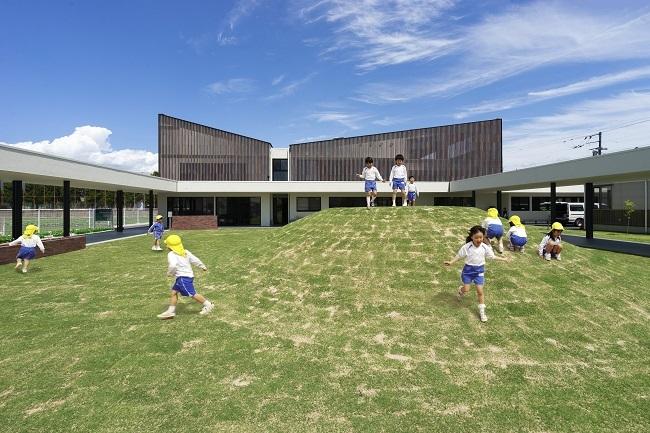
photo: Ryuji Inoue (studio BAUHAUS)
According to the comparative study of children’s motor skills in the former and the new kindergarten (led by Masato Nishimura, a professor of Fukui University in Japan), the number of steps increased by 20 % on average for children at the age of 3 to 5. In the old building, scientists could not detect movements such as “throwing”, “going through”, “crawling” and “riding” – but in the new building they do. The flat playground in the former building limited movement. The new playground however offers two small hills with natural grass. Children enjoy rolling down them and climbing up. They discover natural space outside – with birds and bugs passing by and flowers in bloom.
To a certain extent, architecture helps to lead a healthier life. The play spaces invite children to take exercise. They not only increase the quantity of exercise and improve physical strength just by playing, but the new environment also encourages children to make up their own games and stimulates many kinds of interests.
